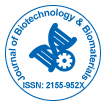Nosso grupo organiza mais de 3.000 Séries de conferências Eventos todos os anos nos EUA, Europa e outros países. Ásia com o apoio de mais 1.000 Sociedades e publica mais de 700 Acesso aberto Periódicos que contém mais de 50.000 personalidades eminentes, cientistas de renome como membros do conselho editorial.
Periódicos de acesso aberto ganhando mais leitores e citações
700 periódicos e 15 milhões de leitores Cada periódico está obtendo mais de 25.000 leitores
Indexado em
- Índice Copérnico
- Google Scholar
- Sherpa Romeu
- Abra o portão J
- Genâmica JournalSeek
- Chaves Acadêmicas
- PesquisaBíblia
- Infraestrutura Nacional de Conhecimento da China (CNKI)
- Acesso à Pesquisa Online Global em Agricultura (AGORA)
- Biblioteca de Periódicos Eletrônicos
- RefSeek
- Universidade Hamdard
- EBSCO AZ
- OCLC – WorldCat
- Catálogo online SWB
- Biblioteca Virtual de Biologia (vifabio)
- Publons
- Fundação de Genebra para Educação e Pesquisa Médica
- Euro Pub
- ICMJE
Links Úteis
Diários de acesso aberto
Compartilhe esta página
Abstrato
An IoT Based Glucose Monitoring System
Sangeetha.K
Diabetes is a serious disease that occurs when our body has difficulty in properly regulating the amount of glucose in the blood stream. Non-invasive diagnosis technique is becoming more prominent in diagnosing diseases due to their pain free and simple monitoring methods. Henceforth, we proposed a non-invasive, sensitive acetone sensor system that offers fast and real-time electronic readout of acetone levels in the breath which is being converted to appropriate glucose levels in the blood using acetoneglucose negative correlation. The breakdown of excess acetyl-CoA from fatty acid metabolism in diabetic patients leads to increase in the levels of acetone in the blood. This acetone reaches lungs and is exhaled through breath and also excreted in urine. Therefore, the breath acetone levels could be a measure of the blood glucose levels of a person. A TGS822 tin oxide (SnO2) sensor has been used to detect the concentration of acetone in the exhaled air. Acetone in exhaled breath showed a correlation with the blood glucose levels. Our objective is to reduce the risk of patients from pricking fingers and also to reduce discomfort they experience during their regular glucose check-ups. This system can also be telemonitored by doctors anytime, anywhere using mobile phones, laptops and other many electronic gadgets through internet. Health monitoring systems based on Internet-of-things (IoT) have been recently introduced to improve the quality of health care services. We designed IoT-based system architecture from a sensor device to a back-end system for presenting real-time glucose, in graphical and human-readable forms to end-users such as patients and doctors. Thing Speak is an open data platform for the Internet of Things. Our sensor device connects to the server through an API keyand the sensor readings are plotted in the graphical form making it easier for the end user to interpret. The results obtained shows that breath acetone levels can be used to determine blood glucose levels efficiently.
Diários por Assunto
- Agro e Aquicultura
- Alimentação e Nutrição
- Bioquímica
- Ciência da Computação
- Ciência de materiais
- Ciencias ambientais
- Ciências Clínicas
- Ciências Farmacêuticas
- Ciências gerais
- Ciências Médicas
- Ciências Sociais e Políticas
- Ciências veterinarias
- Economia e Contabilidade
- Enfermagem e cuidados de saúde
- Engenharia
- Engenheiro químico
- Física
- Genética e Biologia Molecular
- Geologia e Ciências da Terra
- Gestão de negócios
- Imunologia e Microbiologia
- Informática
- Matemática
- Química
Revistas clínicas e médicas
- Anestesiologia
- Assistência médica
- Biologia molecular
- Cardiologia
- Cirurgia
- Dermatologia
- Diabetes e Endocrinologia
- Doenças infecciosas
- Enfermagem
- Fisioterapia e Reabilitação
- Gastroenterologia
- Genética
- Hematologia
- Imunologia
- Medicamento
- Medicina Reprodutiva
- Microbiologia
- Nefrologia
- Neurologia
- Odontologia
- Oftalmologia
- Oncologia
- Ortopedia
- Pediatria
- Pesquisa Clinica
- Pneumologia
- Psiquiatria
- Toxicologia

 English
English  Spanish
Spanish  Chinese
Chinese  Russian
Russian  German
German  French
French  Japanese
Japanese  Hindi
Hindi